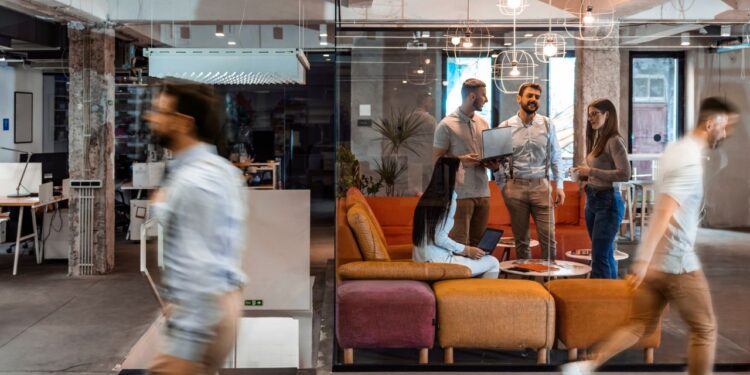A new report from Cushman & Wakefield in partnership with WeWork shows that users of flexible offices want to increase their time in these spaces.
According to the analysis, flexible office users want to be in these spaces at least half of the work week, which is a 19% increase from the current rate, and decrease their remote working arrangements by the same amount.
This supports the notion that employees are ready to be back in an office setting, but still value having the flexibility to choose where and when they work.
“Today, employers have landed on the conclusion that too much WFH takes away from culture, learning, accountability, and ultimately productivity,” said Rob Lowe, executive managing director and partner at Stream Realty Partners.
“Workers are accepting this conclusion with the mandate that they have more flexibility in their work schedule.”
Although demand for flexible offices was on the rise prior to the pandemic, lockdowns threatened the future of this industry. However, with the embrace of hybrid work models, these spaces have become indispensable.
Still, simply incorporating flex space into a company’s network isn’t enough – business leaders need to be ready to evolve at a moment’s notice based on their employees’ needs.
“For so long, the workplace has been a static and stale space that has drained the creativity of many,” said Regan Donoghue, senior principal strategy at Unispace.
“It’s time we let our work environment become an adaptable and flexible space that will spark brilliance in the minds of many. “


 Dr. Gleb Tsipursky – The Office Whisperer
Dr. Gleb Tsipursky – The Office Whisperer Nirit Cohen – WorkFutures
Nirit Cohen – WorkFutures Angela Howard – Culture Expert
Angela Howard – Culture Expert Drew Jones – Design & Innovation
Drew Jones – Design & Innovation Jonathan Price – CRE & Flex Expert
Jonathan Price – CRE & Flex Expert











